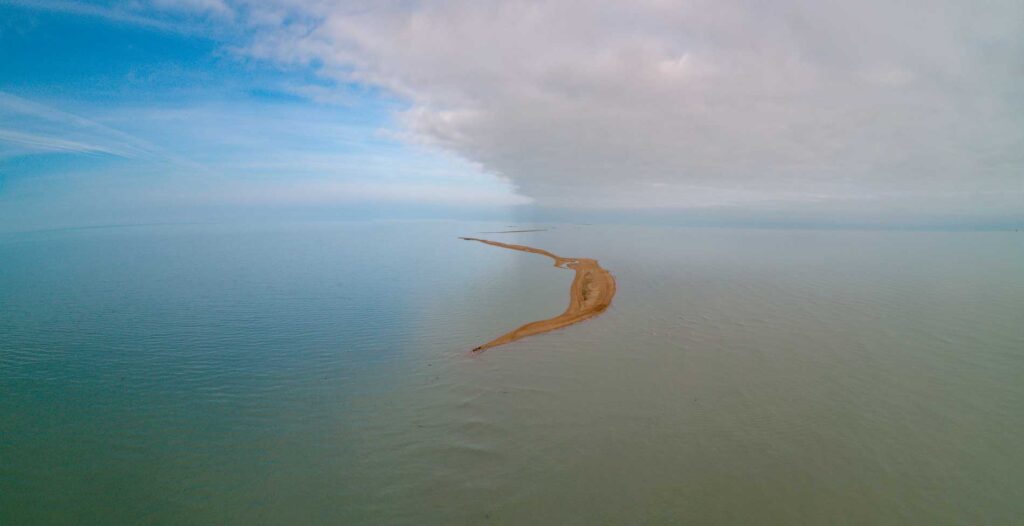Important Decision for the Caspian Seal Conservation
Due to a significant decline in the number of Caspian seals, participants in a scientific and practical conference in Astrakhan decided to strengthen the conservation status of this species in the Red Data Book of the Russian Federation.
On November 10, 2023, IX Scientific and Practical Conference “Challenges for the Caspian ecosystem preserving in the conditions of oil and gas fields development” was held in Astrakhan (Russia). The event was organised by Volga-Caspian Branch of VNIRO (CaspNIRKH) and Lukoil-Nizhnevolzhskneft. Representatives from ministries, scientific institutions, oil companies and environmental organisations of the Caspian states discussed the status of aquatic species inhabiting the Volga-Caspian basin, the impact of exploration and development of oil and gas fields on the Caspian ecosystem, dredging of fishway channels on the status of the ecosystems in the Volga delta lower reaches, biological invasions of aquatic organisms, and other topics (more details in Conference Agenda).
Particular attention at the event was drawn to the Caspian seal, a rare and endangered species, endemic to the Caspian Sea, Red Listed in all five Caspian countries. V.V. Bogoslovsky, General Director of Clean Seas International Ecological Foundation presented Soul of the Caspian Progect. In 2021, the foundation organised 2 expeditions to assess the Caspian seal population abundance in the Russian zone of the Northern and Middle Caspian Sea and tag seals on Maliy Zhemchuzhniy Island. In February – March 2022, an aerial survey of seals was carried out in the Russian waters of the Northern Caspian Sea.

V.A. Bizikov, Deputy Director for Science of VNIRO FSBI, presented the results of monitoring the mass stranding of dead Caspian seals in Dagestan in early December 2022. A group of experts directly registered 2,732 dead seals. The overall number of seals stranded on the Dagestan coast was estimated at 10 thousand. 244 animals were measured. Their zoological length (a curvilinear body length measured from the nose tip to tail tip, along the spine – Kaspika’s note) varied from 78 to 149 cm.
Note: A zoological length of 78 cm is typical for Caspian seal pups in the first week of their life (Sokolskiy et al., 2013), and for weakened young seals, who were abandoned during their nursery period (Badamshin, 1949).
Among sexually mature females, only 6.5 % were pregnant (more details in Conference Proceedings, p. 138). The pathological examination of Caspian seals showed that they were quite healthy at the time of death, and their death occurred approximately 2-3 weeks before being stranded on the coast. V.A. Bizikov also noted: compared with 2022, the overall population number decreased by 51.5 thousand individuals in 2023 (from 311.4 to 259.9 thousand).
Due to this significant population decline, the participants in IX Scientific and Practical Conference supported Clean Seas Foundation’s initiative and decided to ask the Commission on Rare and Endangered Animals, Plants and Fungi of the Russian Ministry of Natural Resources and Environment about the strengthening of the current Caspian seal conservation status in the Red Data Book of the Russian Federation, assigning it I Priority of Environmental Measures (more details in the final document – Conference Decision). The proposed I Priority means that the conservation of this Red Listed species will require the immediate adoption of comprehensive state measures, including the development and implementation of a conservation strategy and/or a program for the species restoration (reintroduction).
Note: In 2020, the Caspian seal was listed in the Red Book of the Russian Federation as a species of Rarity Status 3 (as a rare species) and II Priority Conservation Status, meaning: for this species conservation, it was necessary to implement one or more special environmental measures (Red Book of the Russian Federation, Animals, 2021, pp. 1010-1011).
Source: VNIRO FSBI, Volga-Caspian Branch of VNIRO (CaspNIRKH).
Photos: Clean Seas International Ecological Foundation; from the video by Lotos STRBC.

